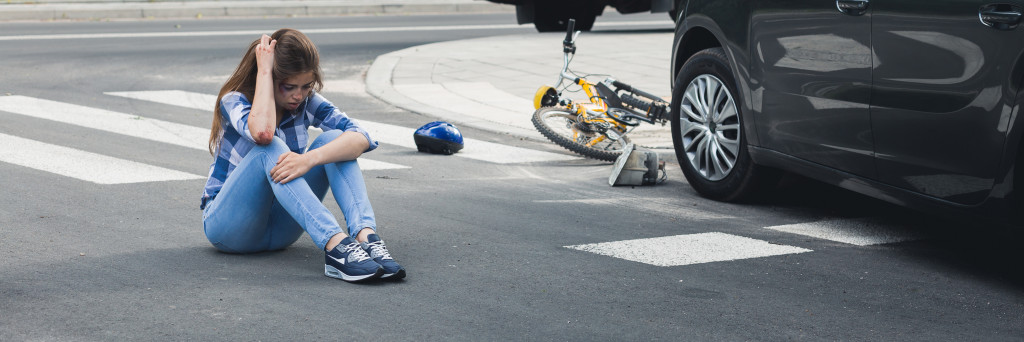A lot of families spend their vacations taking road trips. However, how safe are our roads these days? According to the Global Status Report on Road Safety released by the World Health Organization (WHO), traffic-related deaths reached 1.35 million in 2016 alone. In recent years, traffic deaths have moved up the ranks of all causes of death worldwide and are now ahead of HIV/AIDS.
CNN also reports that the current pandemic saw a rise in risky driving behavior in the U.S., leading to the highest number of traffic deaths in the last decade. What driving practices are the common causes of road accidents? What can the enforcement agencies and driving public do about reducing them? Let’s all do it for our families so that our next road trip will be much safer and more enjoyable.
Common Causes of Road Accidents
The following behavioral risk factors have likely contributed to the increasing number of fatalities due to road accidents: speeding, driving under the influence (DUI), lack of proper riding gear, neglecting seat belts and child restraints—all of which sum up to reckless driving that could hurt not just us, but our loved ones as well.
Below are other driving practices that are common causes of road accidents:
Distracted Driving. In the U.S., distracted driving is a leading cause of road accidents. Distracted driving due to the use of mobile phones while driving and eating or drinking is common, resulting in collisions, both minor and fatal.
Speeding. Driving above the prescribed limits is, unfortunately, another typical risky behavior of many motorists. It drastically increases the risk of losing control of your vehicle, increasing the likelihood of collisions and other accidents. Over-speeding is illegal and punishable by law.
Drunk Driving. Drunk driving is another leading cause of road accidents, especially on weekends and holidays. When people drive under the influence, whether of alcohol or narcotics, their focus and response time is impaired, thus increasing the chances of road accidents.
Reckless Driving. This encompasses all the risky driving practices, including speeding, careless swerving, DUI, tail-gating, and disregarding road signs. This dangerous way of driving manifests a lack of consideration for other motorists.
Reducing Road Accidents: What Everyone Can Do

Both enforcement officials and private citizens should be highly involved in curtailing road accidents. Below are areas that either or both sectors can improve, observe or enforce:
Eradicate Corruption.
The imposition of traffic laws and regulations sometimes, in some areas, is not always consistent. In other words, some motorists are given a “free pass” while others are duly fined. Or it might sometimes happen that some penalties or fines go missing at some point in the process. Perhaps automation of apprehension (CCTVs or the like) and fine payment can lessen the bureaucracy and improve the implementation and collection of traffic infringement fines.
Vehicle Safety.
Practice more discrimination in acquiring new vehicles, and do not prioritize low costs at the expense of safety and structural integrity. Driving a well-manufactured vehicle diminishes the chances of figuring in road accidents. Remember, your whole family will be riding the car you choose.
Speed-detection Devices.
Overspeeding has proven to be one of the leading causes of traffic accidents. Law enforcement’s use of speed detection devices such as the police speed gun has helped curtail the risk of road mishaps.
Proper Riding Gear.
With the uptick in 2- and 3-wheel vehicles on the road, road safety gear should be a priority. Do not allow your family members to go out on the road without proper helmets, goggles, and the like. Likewise, governments should impose stricter laws and penalties regarding the use of safety gear. This includes seat belts for adult drivers and passengers, especially for minors.
Stricter Learner’s Permit Requirements.
Your teenage child is probably thrilled to be getting his first learner’s permit from the DMV. Make sure your young driver is fully equipped to drive before allowing them to fill out the paperwork. Likewise, the bureau will ensure that all applicants meet all criteria to be qualified to drive.
Eyes on the Road.
Drowsiness, essential phone calls, a quick bite, or a much-needed sip of coffee should all be done while safely pulled over on the side of the road. But don’t pull up just anywhere: ensure the safety of the surroundings and that you will not be double-parked or hampering the flow of traffic. Make sure to ingrain this in your young driver, as well.
Former New York City Mayor Michael Bloomberg once said that road safety needs more public attention as it presents numerous opportunities to save lives worldwide. All of us in the community share the responsibility and the duty to keep our roads safe for the whole family.







